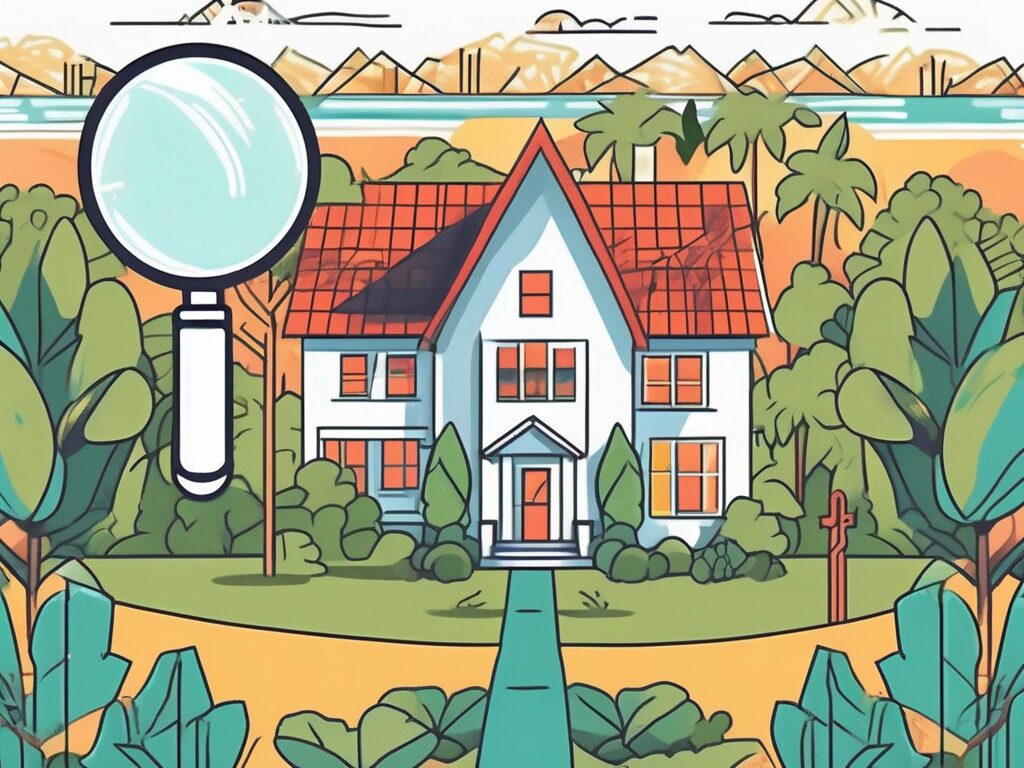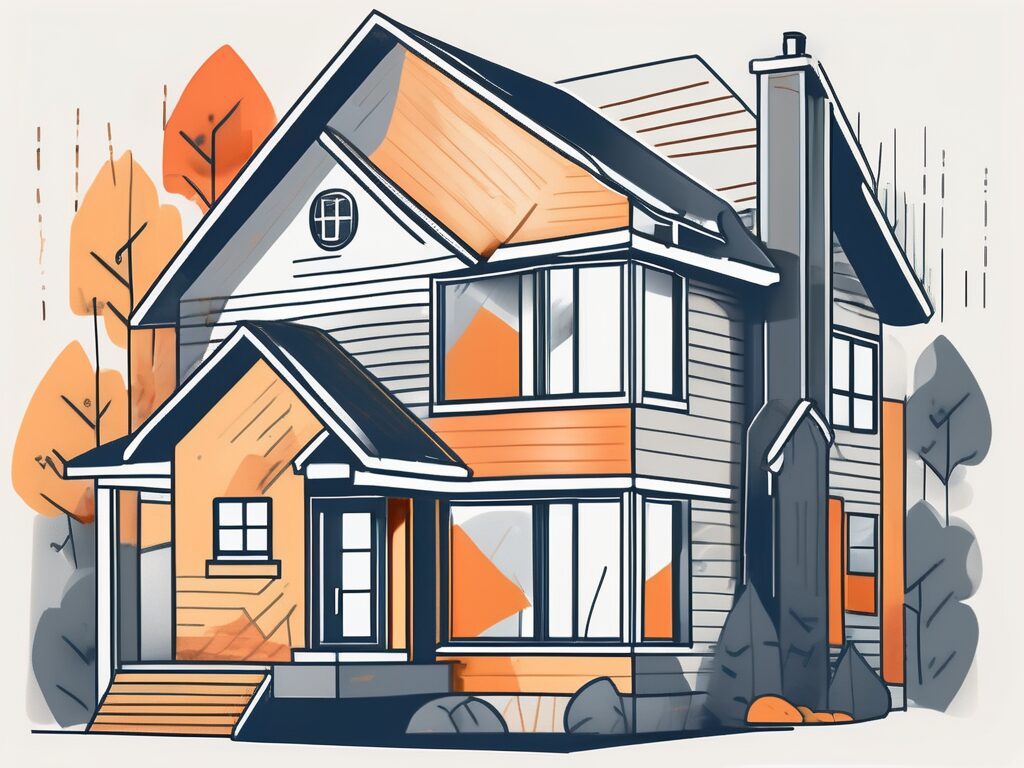
Agent A-Team or Solo Superhero? Finding the Right Real Estate Partner for Your Selling Journey in Wildwood Florida
When it comes to selling your home in Wildwood, Florida,…
January 29, 2024
If you’re considering a siding project for your home, you may be wondering about the best financing options available to you. Renovations can be expensive, and it’s important to choose the right financing option that suits your needs and budget. In this article, we will explore some of the top financing options for your siding project, discuss the pros and cons of each, and provide you with valuable insights to help you make an informed decision.
When it comes to financing your siding project, there are several options to consider. Each option has its advantages and disadvantages, so let’s take a closer look at some of the most popular choices.
FHA 203(k) loans are a popular financing option for home improvement projects, including siding renovations. These loans offer a variety of benefits, such as low down payment requirements, flexible credit guidelines, and the ability to roll the cost of repair or renovation into the loan. However, it’s important to note that FHA 203(k) loans have specific eligibility requirements and may require a lengthy approval process.
When considering FHA 203(k) loans for your siding project, it’s important to understand the process involved. You will need to work with an approved lender who will assess the cost of the siding project and determine the loan amount. The lender will also oversee the disbursement of funds to ensure that the project is completed according to the agreed-upon plans.
Additionally, it’s crucial to consider the long-term implications of an FHA 203(k) loan. While it can provide the necessary funds for your siding project, it will also add to your overall debt. It’s important to carefully evaluate your financial situation and determine if taking on additional debt is the right choice for you.
FHA Title 1 loans are another financing option to consider for your siding project. These loans are designed specifically for home improvements and can be used to finance a variety of projects, including siding replacements. One of the advantages of FHA Title 1 loans is that they do not require a minimum credit score, making them accessible to a wide range of homeowners. However, it’s important to carefully consider the terms and interest rates associated with these loans.
When exploring FHA Title 1 loans, it’s essential to gather all the necessary documentation to support your loan application. This may include proof of income, a detailed estimate of the siding project’s cost, and any other relevant financial information. Providing accurate and complete documentation will increase your chances of approval and ensure a smooth loan process.
It’s also worth noting that FHA Title 1 loans have a maximum loan amount, which varies depending on the type of property and the location. Before proceeding with this financing option, it’s important to determine if the loan amount will be sufficient to cover the cost of your siding project.
A cash-out refinance involves replacing your existing mortgage with a new loan that has a higher balance. The difference between the two is given to you as cash, which can be used to fund your siding project. This financing option may be beneficial if you have built up substantial equity in your home and can secure a lower interest rate. However, it’s crucial to weigh the costs and potential risks associated with a cash-out refinance against the benefits it may offer.
Before considering a cash-out refinance for your siding project, it’s important to assess the current market conditions and interest rates. Refinancing your mortgage can come with closing costs and fees, so it’s crucial to calculate whether the potential savings in interest rates outweigh the costs associated with the refinance.
Additionally, a cash-out refinance will increase the overall balance of your mortgage, which means you’ll be paying off your siding project over the life of your loan. It’s important to carefully consider the long-term financial implications and ensure that you can comfortably afford the increased monthly mortgage payments.
A Home Equity Line of Credit (HELOC) is a revolving line of credit that allows you to borrow against the equity in your home. This type of financing can be an excellent option for homeowners who have significant equity and prefer a flexible payment structure. It’s important to carefully consider the interest rates, repayment terms, and fees associated with a HELOC before choosing this financing option for your siding project.
When exploring a HELOC for your siding project, it’s important to understand how the repayment process works. Unlike a traditional loan, a HELOC allows you to borrow and repay funds as needed, similar to a credit card. This flexibility can be advantageous, as you only pay interest on the amount you borrow. However, it’s crucial to have a solid repayment plan in place to avoid excessive debt and potential financial strain.
It’s also worth noting that a HELOC is secured by your home, which means that failure to repay the borrowed funds could result in the loss of your property. Before proceeding with a HELOC, it’s important to carefully evaluate your financial situation and ensure that you have a stable income to support the repayment of the borrowed funds.
Home equity loans are another financing option to consider for your siding project. These loans allow you to borrow a lump sum of money based on the equity in your home, which you can then use to fund your renovations. Home equity loans often offer fixed interest rates and predictable monthly payments, making them a popular choice for homeowners looking for stability. However, it’s essential to consider the potential risks of borrowing against your home’s equity.
Before proceeding with a home equity loan, it’s important to assess the current market conditions and interest rates. Comparing offers from different lenders will help you secure the best possible terms for your loan. It’s also crucial to carefully evaluate your financial situation and determine if taking on additional debt is the right choice for you.
It’s worth noting that a home equity loan uses your home as collateral, which means that failure to repay the loan could result in the loss of your property. It’s important to have a solid repayment plan in place and ensure that you can comfortably afford the monthly payments before proceeding with this financing option.
Personal loans can provide a convenient and accessible financing option for your siding project. These loans are typically unsecured, meaning they don’t require collateral. Personal loans can be obtained from banks, credit unions, or online lenders. However, it’s important to carefully review the terms, interest rates, and fees associated with personal loans, as they can vary depending on your creditworthiness.
When exploring personal loans for your siding project, it’s crucial to shop around and compare offers from different lenders. This will help you secure the best possible terms and interest rates. It’s also important to carefully review the repayment terms and ensure that the monthly payments fit within your budget.
It’s worth noting that personal loans typically have higher interest rates compared to secured loans, such as home equity loans. Therefore, it’s important to carefully evaluate the total cost of borrowing and determine if the convenience of a personal loan outweighs the potential higher interest expenses.
Some siding contractors may offer financing options directly to homeowners. These financing plans can be convenient, as they eliminate the need to seek external financing. However, it’s important to carefully review the terms and interest rates offered by the contractor to ensure you’re getting a fair deal. Additionally, it’s crucial to consider how the financing agreement may impact your relationship with the contractor and the overall cost of your siding project.
When considering contractor financing for your siding project, it’s important to thoroughly research the contractor and their financing options. Look for reviews and testimonials from previous customers to ensure that the contractor has a good reputation and offers fair financing terms. It’s also crucial to carefully review the terms of the financing agreement, including interest rates, fees, and repayment terms.
Before proceeding with contractor financing, it’s essential to compare the terms and rates with other financing options available to you. This will help you determine if the convenience of contractor financing outweighs the potential costs and risks associated with this financing option.
Credit cards can provide a quick and easy financing solution for your siding project. However, it’s important to use them responsibly and understand the potential risks involved. Credit cards often carry high-interest rates, and if you’re unable to pay off the balance quickly, you may end up paying more in interest than the cost of your siding project. Additionally, maxing out your credit cards can negatively impact your credit score. Carefully evaluate the terms and consider alternatives before relying solely on credit cards for your siding financing.
If you decide to use credit cards for your siding project, it’s important to choose cards with low-interest rates or promotional offers, such as 0% APR for an introductory period. This will help minimize the interest expenses and provide you with a window of time to pay off the balance without accruing additional interest charges.
It’s also crucial to have a solid repayment plan in place and ensure that you can comfortably afford the monthly credit card payments. Failure to make timely payments can result in late fees, increased interest rates, and potential damage to your credit score.
Lastly, it’s important to carefully consider the impact of credit card financing on your overall financial health. Maxing out your credit cards or carrying high balances can negatively affect your credit utilization ratio, which is an important factor in determining your credit score. It’s crucial to weigh the convenience of credit card financing against the potential long-term financial consequences.
Now that we have explored the financing options for your siding project, let’s shift our focus to the different siding materials available for your home. The choice of siding material will not only affect the appearance of your home but also its durability, maintenance requirements, and energy efficiency.
Vinyl siding is one of the most popular options for homeowners due to its affordability, versatility, and low maintenance requirements. Vinyl siding is available in a wide range of colors and styles, allowing homeowners to find the perfect fit for their aesthetic preferences. Additionally, vinyl siding is resistant to rot, insects, and moisture, ensuring that your home remains protected for years to come.
Moreover, vinyl siding offers excellent energy efficiency benefits. It acts as an insulating layer, helping to keep your home cool in the summer and warm in the winter. This can lead to significant energy savings and lower utility bills.
Another advantage of vinyl siding is its durability. It is designed to withstand harsh weather conditions, including strong winds, heavy rain, and even hail. This makes it an ideal choice for homeowners living in areas prone to severe weather.
Aluminum siding is another durable and low-maintenance option to consider for your home exterior. Similar to vinyl siding, aluminum siding is resistant to fire, insects, and rot, making it an excellent choice for homeowners looking for long-lasting durability.
One of the key advantages of aluminum siding is its lightweight nature. This makes it easier to install and handle during the siding installation process. Additionally, aluminum siding is available in a variety of colors and finishes, allowing homeowners to achieve their desired look.
However, it’s important to note that aluminum siding can dent easily, especially when exposed to impact. Therefore, it may not be the best choice for areas prone to severe weather conditions or high foot traffic.
Stucco siding can add a touch of elegance and uniqueness to your home’s exterior. This siding option is known for its durability, weather resistance, and excellent insulation properties. Stucco can be applied to various architectural styles and is available in an array of textures and colors.
One of the key benefits of stucco siding is its ability to regulate moisture. It allows water vapor to pass through, preventing moisture buildup and potential damage to the underlying structure. Additionally, stucco provides excellent thermal insulation, helping to keep your home comfortable and energy-efficient.
However, it’s crucial to hire a professional contractor for the installation, as proper application and maintenance are essential for ensuring the longevity of your stucco siding. Regular inspections and repairs are necessary to address any cracks or damage that may occur over time.
Wood siding provides a warm and natural aesthetic that many homeowners find appealing. The natural beauty and versatility of wood allow homeowners to achieve a timeless and classic look for their homes.
Wood siding is available in different styles, such as clapboard, shingles, and shakes, allowing homeowners to achieve their desired look. Each style offers a unique texture and visual appeal, adding character to your home’s exterior.
One of the key benefits of wood siding is its ability to be painted or stained. This provides homeowners with endless design options, allowing them to customize the color and finish to suit their preferences. Additionally, wood siding can be easily repaired or replaced if damaged.
However, it’s important to note that wood siding requires regular maintenance, including painting, staining, and sealing, to protect it from moisture and insects. Without proper maintenance, wood siding can be susceptible to rot, warping, and insect infestation.
When considering wood siding, it’s essential to choose a high-quality wood species that is naturally resistant to decay and insects. This will ensure the longevity and durability of your wood siding.
With so many financing options and siding materials to choose from, making the right decision can feel overwhelming. To help you navigate this process, here are five essential steps to guide you in choosing the best financing option for your siding project.
The first step in choosing the right financing option is to assess your budget and financial situation. Consider how much you can afford to borrow and repay based on your income, expenses, and existing debts. It’s essential to choose a financing option that aligns with your long-term financial goals and doesn’t overburden you with monthly payments.
Once you have a clear understanding of your budget and financial situation, you can move on to the next step.
Now that you know how much you can afford to borrow, it’s time to research different financing options available for your siding project. Start by exploring traditional options such as personal loans, home equity loans, and credit cards. Each option has its own advantages and disadvantages, so it’s crucial to compare interest rates, repayment terms, and any associated fees.
Additionally, consider alternative financing options specifically designed for home improvement projects, such as contractor financing or specialized siding loans. These options may offer more favorable terms and conditions tailored to your specific needs.
Take your time to thoroughly research and understand each financing option before making a decision.
While conducting your research, it’s a good idea to consult with professionals in the siding industry. Reach out to siding contractors, financial advisors, or even your local bank to get expert advice on the best financing options available to you.
These professionals can provide valuable insights into the pros and cons of each financing option, as well as help you assess the long-term impact on your financial situation. They can also guide you through the application process and ensure that you make an informed decision.
When choosing a financing option for your siding project, it’s essential to consider your long-term financial goals. Are you planning to sell your home in the near future? If so, you may want to choose a financing option that allows you to pay off the loan quickly and minimize interest payments.
On the other hand, if you plan to stay in your home for a longer period, you may prioritize lower monthly payments over a shorter repayment term. Understanding your long-term financial goals will help you make a decision that aligns with your overall financial strategy.
Finally, don’t forget to explore any additional benefits or incentives that may come with certain financing options. Some lenders may offer promotional interest rates, cashback rewards, or other perks that can save you money in the long run.
Additionally, check if there are any government programs or grants available for energy-efficient siding installations. These programs can provide financial assistance or tax incentives, making your siding project more affordable.
By taking the time to explore these additional benefits and incentives, you may find a financing option that not only meets your budgetary needs but also offers extra value.
In conclusion, when it comes to financing your siding project, it’s crucial to explore all available options and carefully consider the pros and cons of each. Assess your financial situation, research different financing options, consult with professionals if necessary, and consider your long-term financial goals. By doing so, you’ll be able to choose the best financing option that suits your needs and ensures the successful completion of your siding project, ultimately adding value and beauty to your home.
Ready to enhance the value and beauty of your home with a new siding project? Don’t let financing be a barrier to your home’s transformation. Richr is here to help you maximize your investment. As a premier property listing platform specializing in For Sale By Owner (FSBO) listings, Richr offers a free home valuation to ensure you make informed decisions about your property. Take the first step towards a successful siding upgrade and call Richr on 844-957-4247 to receive your complimentary Comparative Market Analysis (CMA) today!

If you want the Richr team to help you save thousands on your home just book a call.
 Book a call
Book a call